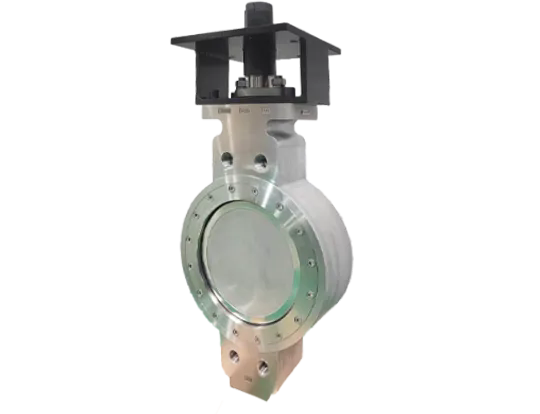Why is the Butterfly Valve an Essential Component in Fluid Control Systems?
2024-11-13
When it comes to fluid control in industrial systems, the butterfly valve is one of the most commonly used and versatile components. But what makes the butterfly valve so essential, and why is it favored in so many different applications—from water treatment plants to oil pipelines? Let’s dive into the unique advantages that make the butterfly valve a crucial part of fluid management systems worldwide.
What is a Butterfly Valve?
A butterfly valve is a type of quarter-turn valve used to regulate or isolate the flow of liquids, gases, or slurries in pipes. It consists of a circular disc or "butterfly" that rotates around a central axis to control the flow. When the valve is closed, the disc completely obstructs the flow, and when it is open, the disc rotates 90 degrees to allow flow. The simplicity of its design allows for quick and efficient operation.
Why Choose a Butterfly Valve?
1. Compact and Lightweight Design
One of the standout features of butterfly valves is their compact size and lightweight construction. Unlike other valve types, such as gate or ball valves, butterfly valves are more space-efficient, which makes them ideal for systems with limited space. This is especially useful in large-scale systems where multiple valves are required. The smaller size also reduces the weight of the piping system, making installation and maintenance easier.
2. Cost-Effective Solution
Due to their simple design and materials, butterfly valves tend to be more affordable than many other valve types. Their low manufacturing cost, combined with their long lifespan and ease of maintenance, makes them a highly cost-effective choice for industrial applications. This economic advantage is why butterfly valves are widely used in industries like water treatment, HVAC systems, and even food processing.
3. Versatility and Wide Range of Applications
Butterfly valves are incredibly versatile and can be used in a wide range of applications. Whether it’s controlling the flow of water, oil, chemicals, or gas, the butterfly valve can be adapted to suit different operating conditions. It is also available in a variety of materials—such as stainless steel, cast iron, or plastic—to suit the specific needs of the fluid being controlled. From pipelines to pumps and ventilation systems, butterfly valves are used in applications ranging from large-scale industrial processes to everyday household systems.
4. Quick and Efficient Operation
The quarter-turn mechanism of the butterfly valve enables rapid operation. This makes it an excellent choice for systems that require fast opening and closing, such as fire protection systems or emergency shut-off applications. The valve's design allows for smooth, uninterrupted flow when fully open, minimizing the risk of turbulence or pressure drops.
5. Durable and Low Maintenance
Butterfly valves are known for their durability. Their simple, robust design results in fewer parts that could wear down or fail over time. Additionally, these valves require minimal maintenance. Unlike other valves that may need frequent lubrication or parts replacement, butterfly valves are easy to clean and often last for many years with little attention. This makes them a reliable choice for long-term use in demanding environments.
Applications of Butterfly Valves
The versatility of butterfly valves means they can be found in a variety of industries, each requiring different specifications. Some of the most common applications include:
- Water and Wastewater Treatment: Butterfly valves control the flow of water and wastewater in treatment plants, allowing operators to regulate pressure and flow efficiently.
- HVAC Systems: In heating, ventilation, and air conditioning (HVAC) systems, butterfly valves are used to manage airflow and maintain system pressure.
- Oil and Gas Industry: In pipelines, butterfly valves provide precise flow control for oil, gas, and other fluids, ensuring safe and effective transport.
- Food and Beverage: Sanitary butterfly valves are used in food and beverage production, where hygiene and easy cleaning are essential.
Conclusion
Butterfly valves offer a unique combination of efficiency, affordability, and versatility, making them indispensable in fluid control systems across various industries. Their compact design, rapid operation, and low maintenance requirements are just a few of the reasons why they are trusted in so many applications. Whether you're designing a new industrial system or upgrading an existing one, the butterfly valve proves to be a reliable and cost-effective solution.
So, the next time you encounter a fluid control system, think about the role of the butterfly valve. With its proven benefits, it’s clear why this valve is an essential component in modern industrial infrastructure.



